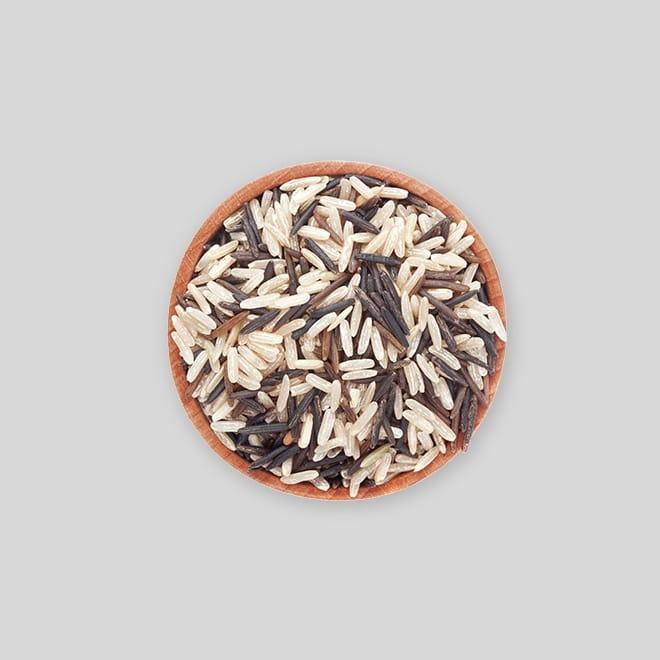Wild Rice




Wild rice is technically not rice at all, it is actually a semi-aquatic grass that historically has grown in lakes, tidal rivers and bays. Wild rice, with its dark color, chewy texture, and earthy taste, is one of only two widely-eaten grains native to North America.
Ripe wild rice is traditionally harvested from canoes powered by long poles, using beater sticks to knock the seeds into the bottom of the boats. Today, 70% of the wild rice sold in the U.S. is grown in California in flooded fields, and when the grains are ripe, the bogs are drained and combines are used to collect the rice.
The rice is then processed and dried, which gives it its signature nutty, smoky flavor. After this, the hull is removed, exposing the dark wild rice kernel.
Wild rice can be found in either hybrid or foraged varieties, hybrid wild rice is a result of farming while foraged wild rice is produced from harvesting waters in the Great Lakes area.
Because of its extremely low fat content, uncooked wild rice can stay fresh for a long time if kept in a dry, air-tight container.
After wild rice has been cooked and drained, cover it tightly and it can stay good for up to a week in the fridge and up to six months in the freezer.
Wild rice can be popped like popcorn! Heat rice in oil and shake until it pops.
The taste of the rice can be altered by changing the water while cooking several times.
If you feel that plain wild rice is too bland, try a rice pilaf! Sautee onions, garlic, thinly-sliced celery and add 1 cup of uncooked wild rice in 3-4 tablespoons of butter. Combine them all and cook until the garlic browns. Add in 2 cups of broth, a pinch of thyme, sage, salt and pepper and cover and cook until the rice is finished, about 20-30 minutes.
The type of starch in rice determines if the rice will come out sticky or fluffy. Heat and liquid permeates the surface of rice when cooking, at which point, starch molecules inside the grains of rice begin to break down and absorbs water, which gives it a gelly textures.
Since Sulfide is toxic to wild rice plants, sulfate pollution decimating wild rice crops in North America is a huge problem and must be controlled to protect natural wild rice.
To cook wild rice mix 1 cup of uncooked rice with three cups of water or broth. Heat it up to boiling level, then reduce the heat, cover and let simmer for 35-50 minutes. When the kernels bursts open, it means the rice is finished.
One pound of wild rice makes about 15 servings
Wild rice has a higher protein content than most other whole grains! It provides fiber, folate, magnesium, phosphorus, manganese, zinc, Vitamin B6, and niacin
Wild rice is especially good for endurance athletes as it has complex carbs, protein, fiber and micronutrients that make it an ideal energizing food.
Corrections or improvements? Email us at
content@sidechef.com